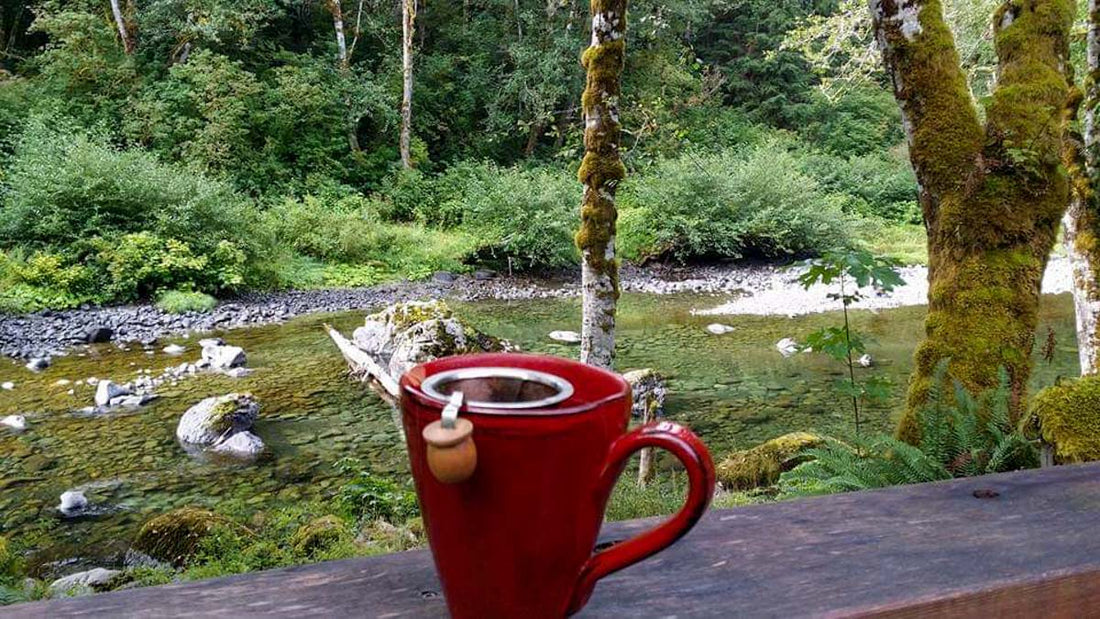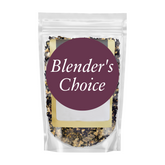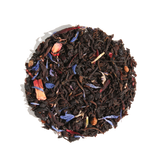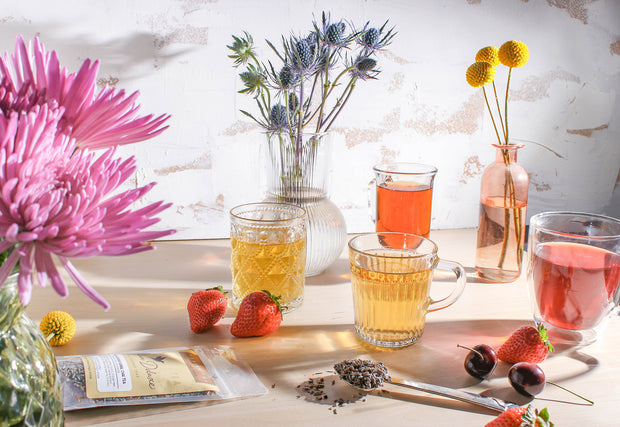There is something so refreshing and peaceful about the mountains, it's quieter and the air feels crisper at higher elevations. The only thing that would make it better is a good cup of hot tea. Making high-altitude tea is not so simple, though.

Boiling Water at High Altitude
It's true that making tea, particularly black tea, can be tricky at high altitudes.
This is because water boils at a lower temperature in higher elevations. The boiling point measures when water turns to gas (steam). While the water boils at 212 degrees Fahrenheit (100 degrees Celsius) at sea level, it will boil at a lower temperature if you are above 1500 feet above sea level. This is due to the lower atmospheric pressure found at high altitudes.

Making High Altitude Tea
When boiling water at a high altitude, we need to keep in mind these temperature differences.
Because water boils at a lower temperature at higher altitudes, the temperature needed to make a good cup of black tea isn't reached when your kettle starts to boil and whistle. Black tea should be brewed at 212 degrees Fahrenheit, but the temperature at which water boils decreases as your altitude increases.
At 1500 feet, water boils at 209 degrees Fahrenheit and 207 degrees Fahrenheit at 2500 feet. At 10,000 feet, the boiling point is all the way down to 193 degrees Fahrenheit. You can see how just reaching the boiling point doesn't mean you've reached the correct temperature for making black tea.
Can You Really Taste the Difference?
Not everyone will notice a change in taste when brewing tea at a lower temperature. If you do, try experimenting with the amount of tea you use and the length of time you steep it when making high-altitude tea. Adding more tea will give it a more robust flavor, but adding too much time may make the tea more bitter.

Switch to Green Tea
You can also successfully make green and white tea at high altitudes since the correct temperature to steep these teas ranges from 175 to 180 degrees, which is reachable at higher altitudes. Oolong tea also has a lower brewing temperature at 195 degrees.
Tea Recommendations
If you are having difficulty making a good cup of black tea, try a robust blend like Fog Cutter, which blends four different black teas with a hint of lemon to make a strong cup.
House Blend is another black tea that might overcome the temperature issues with a little extra tea and time. House Blend is a strong English builder's style tea with creamy vanilla.
Green tea is a safe bet for a properly made cuppa at almost any altitude. You could try Easy To Be green tea, which combines blueberry and hibiscus with Japanese green tea. This blend is a good starting point if you are new to green teas, as it's very light and fruity in flavor. Just don't oversteep this one (or any green tea) as the hibiscus can go from fruity to tart.

If you want a more traditional green tea, then Hope Blend is a good choice. A comforting blend of Chinese green tea and light jasmine notes from dried jasmine flowers, this tea hits that green tea craving. Steep quickly at 175-180 degrees Fahrenheit for best results.
White tea is also steeped in that 175-180 degrees Fahrenheit range and can be made in higher altitudes. Afternoon "High Tea" white tea is a lovely blend of peach and pear. White tea has a gentle flavor with less caffeine than green or black tea and is a good choice for that afternoon break.
If you are really needing a cup of black tea, but just can't get it right when boiling water at a high altitude for tea, you could try an oolong tea which is brewed at 195 degrees Fahrenheit.
Oolong tea is not quite as oxidized as black tea, but more so than green tea. I find this gives it a flavor closer to black teas. Crystal Clarity oolong tea is a blend of oolong, basil, and lemon that could fix that black tea craving.
Cold brewing is another option when wanting a cup of black tea at high altitudes.
Whichever tea you choose, I hope you find your cup satisfying and your mountain scenery breathtaking.

!['Chocoholic' Chocolate Tea Variety Pack [6-Pack Variety of Flavors]](http://www.plumdeluxe.com/cdn/shop/files/2.01-1800x1800-PlumDeluxe-DAJ-274695.jpg?v=1736886689&width=165)
![Patisserie Dessert Tea Variety Pack [6-Pack Variety of Flavors]](http://www.plumdeluxe.com/cdn/shop/files/4.01_-_1800_x_1800_-_Plum_Deluxe_-_DAJ_-_274695.jpg?v=1736886720&width=165)















